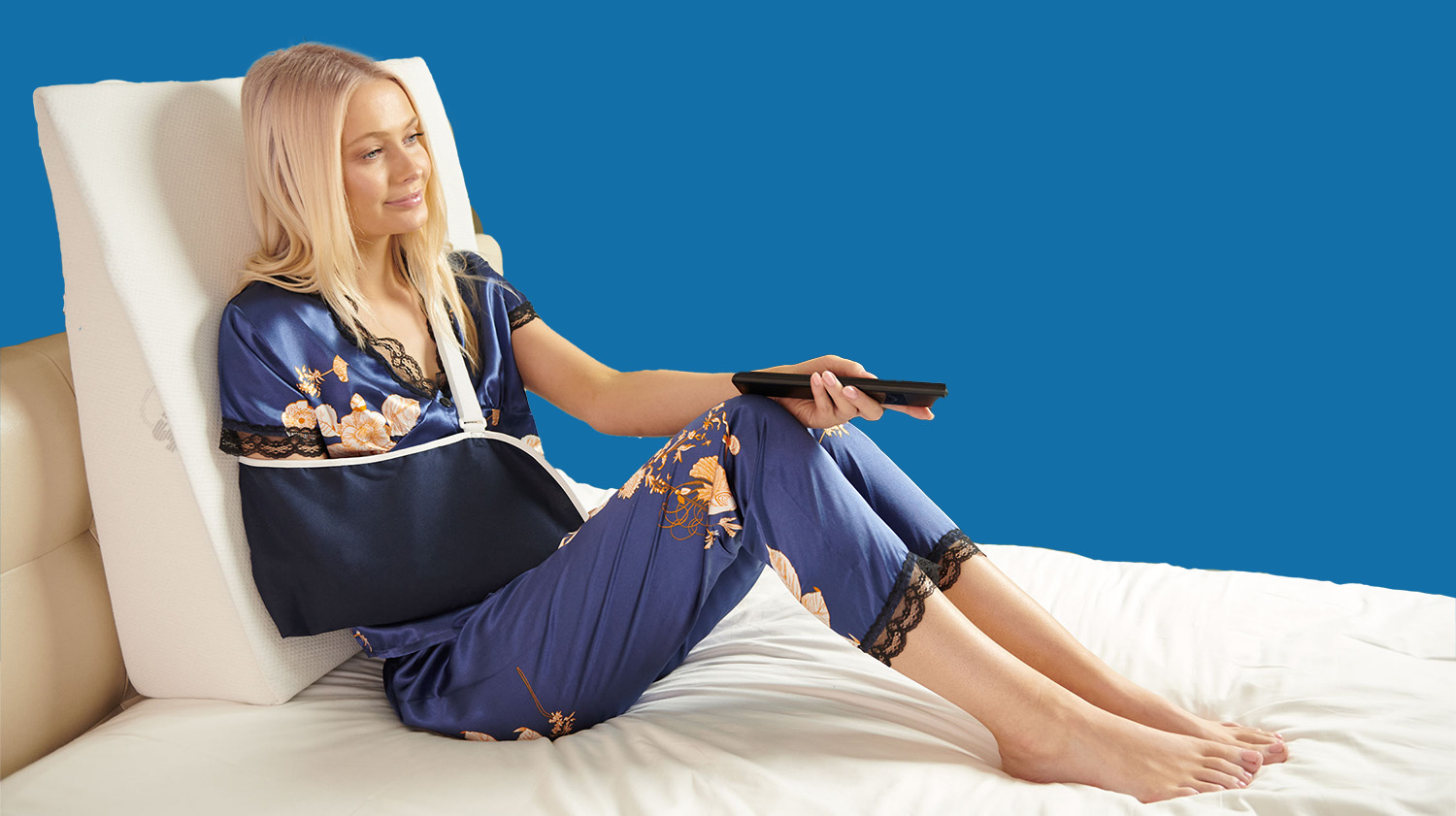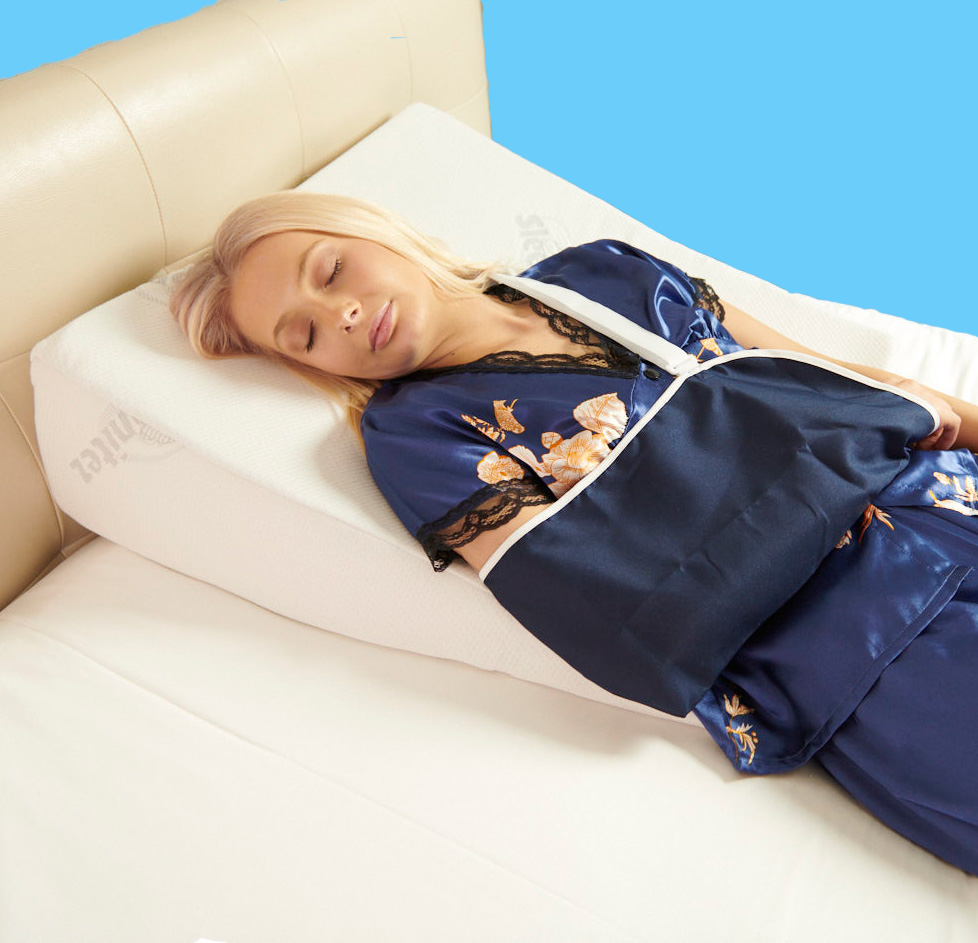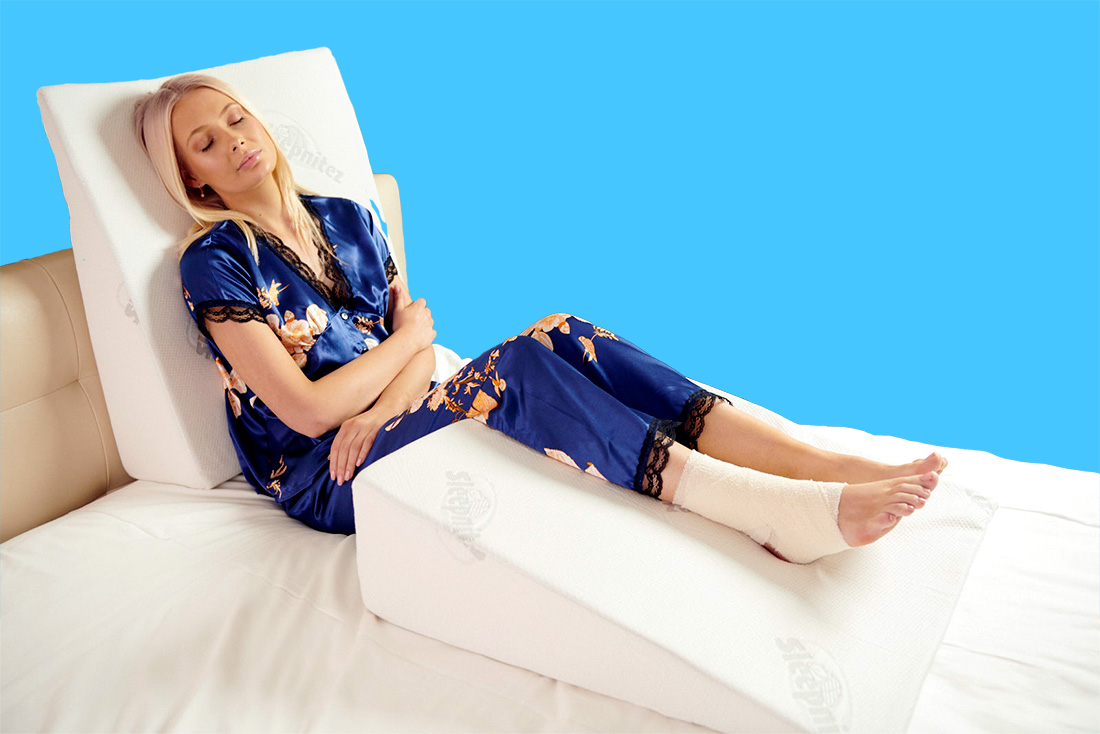
In the vast realm of sleep solutions and post-operative care, a seemingly unassuming hero is making waves: the wedge pillow. Whether you’re navigating the challenging waters of post-surgery recovery or simply on a quest for that elusive perfect night’s sleep, the wedge pillow promises a transformative experience. Let’s delve deeper into the myriad benefits of this unique pillow and uncover why it’s rapidly becoming an essential item in modern households.

The Role of the Wedge Pillow in Post-Surgery Recovery
Undergoing surgery is a significant event, and the recovery process can often be as challenging as the procedure itself. Comfort becomes paramount, and this is where the wedge pillow shines:
Combating Swelling: One of the most common post-operative side effects is swelling. Elevating the affected area using a wedge pillow can significantly reduce this swelling, aiding in a smoother recovery process.
Promoting Healthy Blood Circulation: The inclined design of the wedge pillow encourages better blood flow, crucial for healing post-surgery wounds and incisions.
Easing Respiratory Challenges: For individuals with respiratory issues or those recovering from surgeries that might impact breathing, the elevation provided by the wedge pillow can help clear airways, making breathing more effortless and comfortable.
Comfort Beyond Sleep: Recovery often involves extended periods of bed rest. The wedge pillow isn’t just for sleeping—it offers a comfortable solution for sitting up in bed, making activities like reading, watching TV, or even having meals more enjoyable.

Beyond Recovery: The Sleep Quality Revolution
The wedge pillow isn’t just a tool for post-surgery recovery. Its benefits extend to anyone seeking a more restful night:
Tackling Acid Reflux: The incline of the wedge pillow can prevent stomach acid from traveling upwards, offering relief to those suffering from acid reflux.
A Solution to Snoring: By elevating the head and neck, the airways remain more open, potentially reducing or even eliminating snoring, a boon for both the snorer and their bed partner.
Ensuring Spinal Health: Proper spinal alignment is crucial for preventing back pain and ensuring a restful sleep. The ergonomic design of the wedge pillow promotes this alignment, making it a favorite among those with chronic back issues.
Choosing the Right Wedge Pillow
The market is flooded with options, but not all wedge pillows meet the mark. Here’s what to consider:
The Memory Foam Advantage: While wedge pillows aren’t made entirely of memory foam, the best ones feature a generous top layer of this material. This layer determines the comfort and sleep quality. Beware of misleading terms like “therapeutic foam.” If it’s not explicitly labeled as memory foam, it’s not the genuine article.
Safety First: Ensure your pillow’s foam is certified by CertiPUR-US and the cover boasts a certification from OEKO-Tex. These certifications guarantee a product free from harmful chemicals and safe for prolonged use.
Scientifically Proven Benefits
Research has consistently highlighted the importance of sleep quality:
A study on postoperative sleep quality emphasized the role of optimal sleep in aiding recovery.
Research on elderly patients post-surgery underlined the significance of sleep quality in hastening recovery.
The link between preoperative sleep quality and emergence delirium in pediatric patients further underscores the importance of quality sleep both before and after surgical procedures.
Conclusion
The wedge pillow is more than just a sleeping accessory. It’s a holistic tool for health, recovery, and rejuvenation. As you embark on your journey to better sleep or smoother recovery, consider the wedge pillow as your trusted companion. With its proven benefits and growing popularity, it’s a worthy addition to every household.
Research:
https://www.dovepress.com/the-impact-of-morning-surgery-or-afternoon-surgery-on-postoperative-sl-peer-reviewed-fulltext-article-NSS
https://bmcanesthesiol.biomedcentral.com/articles/10.1186/s12871-021-01507-2
